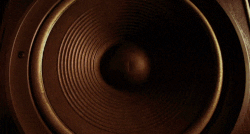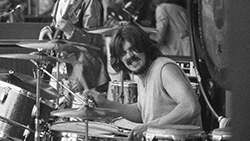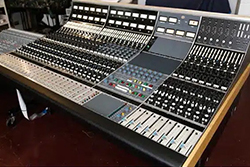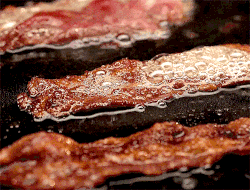Boomy, Crispy, Punchy
No, we’re not talking about breakfast cereal…
If you have ever done any research on audio equipment, recording techniques, or music production, you’ve likely been subjected to an audio-buzzword beatdown.
Describing how something sounds using purely technical terms would read like a Master’s thesis, and that’s not how most of us learn. Audio buzzwords often function as shorthand for specific textures, nuances, and sonic qualities within the realm of music production, so while we may love to hate some of these terms, they’re a necessary evil to communicate using analogies that connect with larger groups of people.
Without further delay, let’s try our hand at some audio buzzword definitions. We’re sure nobody on the internet will disagree with us!
Fat
"Fat" audio is all about richness and substance. It conveys a full, harmonically rich sound, often characterized by a broad frequency spectrum that imparts a 3 or 4-dimensionality (depth, width) to your mixes.
Boomy

When something is described as "boomy," it suggests an exaggerated emphasis on low frequencies, often resulting in a resonant and thunderous quality. When people refer to sounds as “boomy”, there is likely a stronger sub bass response, under 60 Hz, vs a “tight” or “thumpy” sound that will start to approach lower-mids in the 200-500 Hz range.
Pro Tip: Looking to get that extra “thump” out of the kick drum? Consider boosting 60 Hz with an outboard EQ - especially one with all-analog tube warmth.
Punchy

"Punchy" audio denotes a sharp and impactful transient response. Think of drums that cut through the mix or a bassline that packs a dynamic punch - very reminiscent of 70s-era American console sound. It’s easier to see this looking at wav files that have a very “tall” or “sharp” first hit that quickly dissipates into the resonant, decaying sound.
Rich

"Rich" audio carries a sense of depth and opulence - it’s another example of buzzwords that fall into the “harmonically detailed” category. The audio in sources labeled “rich” almost seem to buzz or fizzle with activity without sounding distorted. To achieve harmonic richness, many producers and engineers go to that “British” console sound, pushing the red input gain knob into saturation while using the gray output to set final level into the interface.
Bonus: If you want to both push harmonic overtones and emphasize specific frequencies, consider a British-style mic pre with onboard EQ.
Transparent

“Transparent” audio means the original sound or signal is relatively unchanged from its original performance or amplification. Sometimes, this has to do with the actual tone or sonic quality of the performance, and sometimes, this has to do with the overall performance dynamics.
For example: Some compressors are labeled “transparent” because they impart less sonic character onto the source material. Some compressors are considered “transparent” because their internal settings are “slower”, which means more dynamics are preserved from the original performance.
Fun Note: For a good example of the latter, check out 2A-style compression, lauded by engineers and producers for its ability to keep a performance musical while adding analog color.
Pristine / Clear

"Pristine" or “clear” audio is virtually free from noise or distortion. Expect a transparent listening experience, revealing detailed note separation in polyphonic instruments and empty space between parts on dense arrangements.
Crispy

"Crispy" audio is characterized by a sharp and bright top end, often associated with the high-frequency emphasis. Unlike some other buzzwords where a smoother top end is implied, “Crispy” is unapologetically loaded with treble information.
Brilliant

"Brilliant" audio sparkles in the high frequencies, providing a sense of shimmer and brightness. This usually means there is top-end emphasis, above 10K perhaps, without harshness that would make the treble frequencies less pleasant.
Ambient

"Ambient" refers to the spatial characteristics of audio, encompassing elements such as reverb and environmental immersion. Reverb tails and decaying delay repeats pass through with clarity and empty space is able to breathe.
Dynamics

“Dynamic” or “dynamic range” refers to the range between the quietest and loudest parts of a sound or an entire piece of music that has been mixed and mastered. Dynamics processors are commonly known as compressors, leveling amplifiers, and limiters. The amount of dynamics present in a song can vary greatly depending on the genre of music and the final medium of distribution. Think of 2000s Pop as having a lot of dynamic control vs, Opera which allows a lot of dynamic variation, even in the final mix and master.
In the world of pro audio recording and production, buzzwords act as a shared language among artists, engineers, and producers. Overused as they may be, they serve as valuable tools for conveying desired sounds and guiding the creative process.
Whether you're looking for a fat bassline, an ambient soundscape from stereo room mics, or a crispy lead vocal, using these words with confidence can empower you to better-articulate your artistic vision and achieve the ever-elusive sound in your head.
